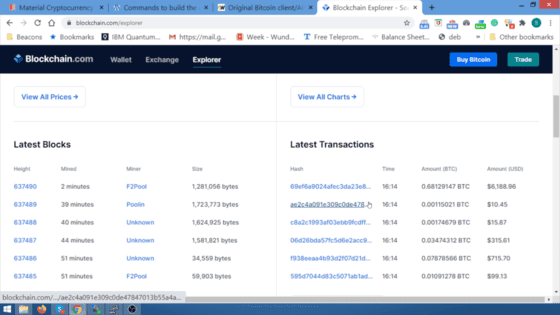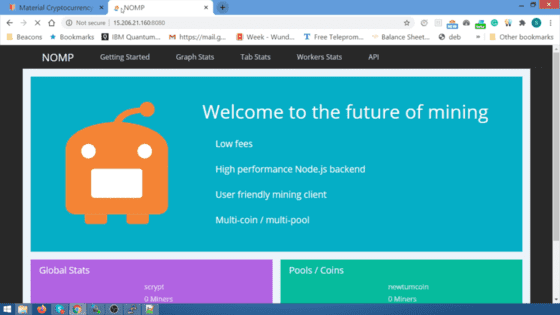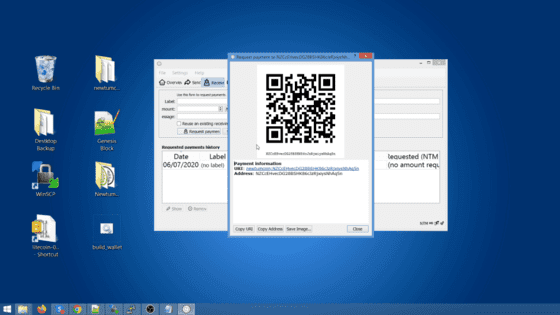
Welcome to the Cryptocurrency Creation Chronicles! 🚀 Ever fancied the idea of minting your own digital fortune? You’re in the right place! Our blog takes you on an exhilarating journey through the intricate world of cryptocurrency crafting. From unraveling the mystery behind blockchain to the thrill of witnessing your ideas materialize into digital coins, we’re here to guide you. Stay with us a bit longer; there’s a wealth of knowledge coming your way. Curiosity piqued? Keep exploring, and soon, you’ll have the keys to your very own crypto kingdom. The adventure begins now!
In the rapidly evolving landscape of digital finance, cryptocurrencies have transcended their niche origins, thanks in no small part to Bitcoin’s groundbreaking popularity. Yet, the world of cryptocurrency extends far beyond the realms of Bitcoin and Litecoin, holding a promise of innovation and financial transformation that few can fully grasp.
Picture this: your very own digital currency, seamlessly integrated into the fabric of everyday transactions, reshaping businesses and rewriting the rules of commerce. It’s not just about Bitcoin; it’s about a revolutionary shift where trade able cryptocurrencies are poised to eclipse traditional concepts like coupons, cashback, and even multi-level marketing strategies.
So, are you ready to redefine your understanding of financial possibilities? Are you prepared to explore the limitless potential of your own cryptocurrency? Join us as we navigate the fascinating terrain of digital finance, breaking down complexities and guiding you through the steps that will transform your vision into reality. Together, let’s step into the future of finance and craft a world where your unique cryptocurrency becomes a beacon of innovation and prosperity.
In the vast landscape of online courses, everyone seems focused on tokens. But let’s be clear, tokens and real coins like Bitcoin and Litecoin are worlds apart. Here, we don’t just teach you to create a token; we empower you to craft your very own cryptocurrency universe.
Discover the freedom to develop your mining pool, explore new horizons with your explorer, and design your wallet without relying on Ethereum or Stellar.
Ready to break free from token constraints? Join us and transform your crypto aspirations into a thriving, independent cryptocurrency reality!

Creating a new cryptocurrency is like launching a startup; it requires vision and planning. To craft your coin’s purpose, think about the problems it will solve and how it benefits people. For example, if you aim to combat environmental pollution through tree planting, your coin can represent tree ownership, and fruit proceeds go to coin owners. When people want to sell a tree, they sell the coin. Prior to coin development, understand blockchain basics, and pay attention to calculations, hardware, and coin components. Explore these concepts further through optional videos. Your vision is the foundation for building your mineable cryptocurrency.
Once you have a clear vision for your cryptocurrency, it’s time to create a plan. Planning your cryptocurrency means deciding how it will work. Think about Bitcoin, for instance. It has specific rules like a maximum of 21 million coins, mining rewards, halving every 4 years, and its symbol, BTC. Similarly, Litecoin and Ethereum have their own rules. Just like these coins, you’ll need to figure out the rules and details for your cryptocurrency. This plan will include things like how many coins there will be, how people can earn them, and what your cryptocurrency will be called.

The parameters you must consider when developing your mineable coin are listed below.
Blockchain is like a computer program, and it comes with its own code. The cool thing is that many blockchain platforms, like Bitcoin, Litecoin, Ethereum, and others, share their code on a website called GitHub. You can think of it as a big library for computer code.
When you want to make your own mineable cryptocurrency, you have to decide what kind of computer code it will use. For example, Bitcoin uses a code called SHA256, and Litecoin uses one called Scrypt.
Instead of creating all the code from scratch, it’s often smarter and faster to take the code from GitHub and change it to make your own cryptocurrency. It’s a bit like using a recipe to make a delicious meal but adding your own special ingredients to make it unique. You can get the code and resources you need from a specific website to help you create your cryptocurrency.
Every Blockchain Application’s genesis block is the first blockchain. And your cryptocurrency is nothing more than a blockchain app.
When creating the Genesis block for Bitcoin, we must generate three Genesis blocks.
There are three Genesis Blocks.
These three genesis blocks can be created with C++ source code. You can also use an existing Python script to build this genesis block.
However, constructing the above three Genesis blocks in C++ and Python script may take a significant amount of time and resources. We designed a little web application to simplify the process of constructing three genesis blocks.
Please use this URL to visit this web application and produce a Genesis block for your Mineable Cryptocurrency.
Coding is a tricky part of making your own mineable cryptocurrency. Here’s what you need to do:
I can’t explain every single detail here, but there’s a course on Udemy that can help you with all the steps to create your own cryptocurrency. It’s like a guide that walks you through the process step by step.
Creating your own mineable cryptocurrency involves a few technical steps. First, you compile the coin using a program called a C++ compiler. Then, you make a special file that can run on computers using Windows or Linux.
To do this, you need to install some necessary tools on your computer. After that, you follow a set of specific commands. These commands are pretty much the same for Bitcoin and Litecoin.
You can find all the commands you need to create your cryptocurrency on a website link.
But before you get started, it’s crucial to set up your computer as a Linux server or use a Linux computer. This is important for the process to work correctly. It’s like preparing the kitchen before you start cooking a meal.
To create and run a mineable cryptocurrency, it’s best to use a special type of computer called an Ubuntu server, specifically Ubuntu 18.04. You can think of this server as a workspace where you build and run your cryptocurrency.
You can get an Ubuntu server from places like Amazon AWS, Google Cloud, or Digital Ocean. Setting up the server might be a bit tricky at first, but once it’s ready, the process of building your coin becomes much faster and easier.
To work on your server, you can use tools like WinSCP and Putty. These tools help you connect to your server and do your cryptocurrency work.
If you want a step-by-step guide on how to set up servers on AWS, Google Cloud, and Digital Ocean, as well as how to use WinSCP and Putty, you can check out the URL for more details. It’s like having a manual to guide you through the process.
You’ve put in a lot of effort: you’ve modified the cryptocurrency code, set up a server, and built your coin. Now, it’s time to create a cryptocurrency explorer.
Think of the explorer as the friendly face of your cryptocurrency. It’s like a tool that shows all the transactions to the public, and it tells everyone how certain those transactions are. This makes your cryptocurrency more transparent and trustworthy.

To set up a cryptocurrency explorer, you need a computer program called Node.js and some special parts that work with Node.js. You can find different explorers for different cryptocurrencies and methods on a website called GitHub.
No matter which explorer you choose, you’ll need Node.js and another program called MongoDB to make it run. These tools help your explorer do its job.
In creating a mineable cryptocurrency, mining plays a vital role. As your cryptocurrency grows, the process becomes more challenging with each new block. The increased challenge means you need more computing power to mine new coins.
That’s where setting up a mining pool comes in handy. It’s like sending out invitations to miners. They join your pool to work together, using their combined computing power to mine coins more efficiently. Think of it as teamwork that helps you keep your cryptocurrency running smoothly.

There are two type of mining in cryptocurrency world.
Solo Mining: Solo mining is like going on a treasure hunt by yourself. It’s good when a new cryptocurrency is just starting, and not many people are mining it yet. Or, you might have super-powerful hardware that’s great at finding coins on its own. When you solo mine, your mining hardware connects directly to the cryptocurrency’s system.
Mining Pool: Mining pool is teamwork. When lots of miners join together, it’s like a group treasure hunt. This is helpful when the cryptocurrency is tough to mine because many miners work together, making it easier to find coins. When a coin is found, everyone in the pool gets a share of the reward based on how much work they did.
Cryptocurrency Mining Client: No matter if you’re solo mining or in a pool, you’ll need a special tool called a mining client. It’s like a magic wand that helps you find coins. You can use a GPU miner or CPU miner, depending on your hardware. There are different mining clients for different jobs. The video will show you how to set up a simple CPU miner for mineable cryptocurrencies. It’s like having the right tool for your treasure hunt!
Cryptocurrencies are usually made to work with a kind of computer system called Linux. There are special tools called “daemon” and “cli” that let you do different things with the cryptocurrency, like making a new address, checking how much you have, and sending coins to others. But not everyone has a Linux computer.
So, to make it easier for everyone, there’s something called a desktop wallet. It’s like a simple program you can put on your regular computer. With a desktop wallet, you don’t have to type in tricky commands. You can do things like receive money, send money, or make new addresses just by clicking your mouse. It’s a user-friendly way to deal with cryptocurrency.

To build a desktop wallet for mine-able cryptocurrency, cross-compiling is required.
Cross-compiling means creating an exe for windows application in the Linux environment.
Below are commands to build desktop wallet for mine-able cryptocurrency
#installing pre requisite
sudo apt install build-essential libtool autotools-dev automake pkg-config bsdmainutils curl git
#installing gc++ compiler
sudo apt install g++-mingw-w64-x86-64
#configuring the posfix
sudo update-alternatives --config x86_64-w64-mingw32-g++After following the above step please run the bash file to create your desktop wallet. This process is long and may take 50-80 minutes depending upon the server configuration.
Bash file can be downloaded from this URL: Bash File to Create Desktop wallet
Above Bash file contains all the commands to create your desktop wallet for your own mine-able cryptocurrency.
Most people use mobile phones and the internet. While desktop wallets are useful, they come with their own risks like computer problems or damage.
To reduce the risk of losing your coins due to computer issues, we have mobile and web wallets. These are like apps or websites that make it easy to use your cryptocurrency. You can even exchange coins easily.
Mobile and web wallets rely on something called a “Coin API” to work. Think of it as a special language that helps your wallet understand the cryptocurrency.
To make all of this happen, we need a “business layer” created by computer experts using languages like PHP, NodeJs, Java, or .Net. This layer connects the mobile and web wallets to the Coin API. The wallets act like friendly faces that you use to work with your cryptocurrency.
Mobile and Web Wallet should have the following minimum basic features to make it Usable.
Creating Your Cryptocurrency: Understanding the Time frame
When it comes to creating your own cryptocurrency, the duration isn’t set in stone; it hinges on various factors. Some claim it takes as little as 15 minutes, while others assert it could stretch over two months.In General it can take upto 1 hour to 3 months. Both perspectives are accurate, and here’s why:
If you’re creating a cryptocurrency token on existing platforms like Ethereum or Binance, it’s swift, taking approximately 15 minutes.
However, if you’re diving into building your blockchain network for a mineable coin, it’ll take longer, contingent on factors like the algorithm, your blockchain expertise, and additional applications like web or Android wallets.
Algorithm Selection: For algorithms like Scrypt and SHA256, crafting a cryptocurrency with features like coin, explorer, mining pool, and web wallet takes around 20 days for experts, or a bit longer if you’re new to the technology.
Complex Algorithms: Intricate algorithms like RavenCoin, being Anti-ASIC, might extend the process to approximately 1.5 months.
Advanced Platforms: Platforms like Ethereum, entailing comprehensive smart contracts like ERC20, NFTs, and DApps, demand meticulous execution and testing. Developing on these platforms can extend over six months due to the complexity and the need for a substantial team.
With Our Services: Opting for our services ensures a streamlined process. Our expert team can develop your cryptocurrency, including a mining pool, explorer, desktop, web, and mobile wallets in a comprehensive package. The entire process, from conception to completion, typically takes about a month.
DIY Approach: Should you choose the DIY route, following our comprehensive course could enable you to create your coin within 1-2 days. Even in a worst-case scenario with minor hiccups, our support can resolve issues within a day or two. While the initial setup might seem quick, factors like testing, mining setup, domain pointing, SSL integration, and explorer configuration demand meticulous attention, warranting a minimum timeframe of around a month to ensure flawless functionality.
While the journey to creating your cryptocurrency may vary in duration, rest assured that with our guidance or your determined efforts, your unique digital currency will soon be a reality. Whether you prefer our expert assistance or are geared up for a DIY adventure, your vision of owning a cryptocurrency is within reach. Feel free to explore our services or embark on your creation journey—either way, your coin’s story begins now.
Chapter – 1: Introduction
Chapter 2: What is Blockchain?
Chapter 3: Essential Coin Elements
Chapter- 4: Plan your Coins and Calculation
Chapter- 5: Source Code
Chapter- 6: Source Code Modification
Chapter- 7: Generating Genesis Block
Chapter- 8: Changing the important parameter for Coin
Chapter- 9: Embedding Genesis Block for Main Net
Chapter- 10: Test Net & Regression Test Net
Chapter- 11: Getting the IP of the Server
Chapter 12: Commenting Code in Chainparams.cpp
Chapter 13: Renaming and Replacing
Chapter 14: Setting Up Environment
Chapter 15: Installing BerkeleyDB
Chapter 16: Building your coin
Chapter 17: Running and Generating First Block
Chapter 18: Setting Up Another Server For Crypto Nodes
Chapter 19: Syncing the Server
Chapter 20: Understanding the Command
Chapter 21: Setting Up Crypto Explorer: Developer’s Method
Chapter 22: Setting Up an Explorer on the BlockErry Platform
Chapter 23: Running Cryptocurrency
Chapter 24: Installing and Configuring a Mining Pool
Chapter 25: Running Mining Pool and Explorer in Background
Chapter 26: Setup Mining Clients
Chapter 27: Start Solo Mining
Chapter 28: Mining Cryptocurrency with Mining Pool
Chapter 29: Desktop Wallet Build and Creating an Exe
Chapter 30: Using Desktop Wallet for First Crypto Transactions
Chapter 31: Accessing coin API using Node Js